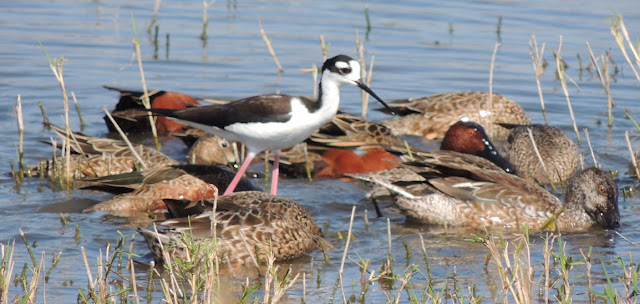
Established in 1943 for the protection of migratory birds, Santa Ana National Wildlife Refuge happens to be positioned along an east-west and north-south juncture of two major migratory routes for many species of birds. It is also at the northern-most point for many species whose range extends south into Central and South America. The refuge is right in the middle of all this biological diversity, which is what makes this 2,088 acre parcel the ‘jewel of the National Wildlife Refuge System.’ Though small in size, Santa Ana offers visitors an opportunity to see birds, butterflies and many other species not found anywhere else in the United States beyond deep South Texas.
Situated along the most southern stretch of the Rio Grande, the Santa Ana National Wildlife Refuge is home to resident species like green jays, chachalacas and great kiskadees, making it one of the top birding destinations in the world. The refuge is important habitat for birds from the Central and Mississippi flyways that funnel through on their way to and from Central and South America. Other bird species, like the groove-billed ani, reach the northern limit of their range in South Texas and do not go much further north than deep South Texas.
Hundreds of thousands of migrating raptors fly over the refuge in spring and fall, including broadwing hawks, northern harriers and peregrine falcons. Santa Ana National Wildlife Refuge’s rarest raptors, the hook-billed kite and gray hawk, are seen occasionally. Spring warblers are abundant with more than 35 species seen, including golden-winged warbler, magnolia warbler, northern and tropical parula, American redstart, palm warbler and yellow-breasted chat.
Zebra longwings, Julias, and Mexican bluewings are but a few of the more than 300 butterfly species found on the refuge. Peak diversity falls between October and December with a single October day known to produce a tremendous 65 documented species! The butterflies of Santa Ana National Wildlife Refuge are mainly tropical, with many species occurring only as occasional migrants or transients from Mexico.
At an ecological crossroad, Santa Ana is strategically located where subtropical climate, gulf coast, great plains and Chihuahuan desert meet. Here, next to the Rio Grande, you will find Sabal palms growing alongside prickly pear cactus, habitat for the ocelot and jaguarundi, two endangered cat species known to still prowl the deep forest. Lucky visitors might see coyote and bobcat. Look for fresh diggings left by nine-banded armadillos. Lizards, snakes and the Texas tortoise bask in summertime heat and days close with Mexican free-tailed bats wheeling across star-studded skies.
- from the US Fish and Wildlife Service website.
 |
| Cleverly named Green Parakeets |

 |
| Long billed Thrasher |
 |
| Female Ladder-backed Woodpecker |
 |
| One of the trails at Santa Anna |
 |
| Great Kiskadee |
 |
| Monk or Quaker Parakeet on the edge of one of their iconic [huge] stick nests |
 |
| Texas Indigo Snake? |
 |
| The Rio Grande - that's Mexico on the right |
 |
| Distant male American Kestrel |
 |
| An unknown collective noun of stilts |
 |
| Lifer! - Solitary Sandpiper [although i may have seen one in Venezuela in 1989....] |
 |
| Stilt among Cinnamon Teal |
 |
| White-faced Ibis |
to be completed...........















No comments:
Post a Comment